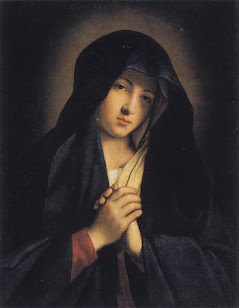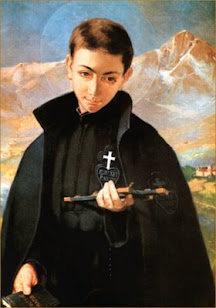We pray with Mary. We experience her practically, emotionally, and rationally. But perhaps we’re still putting the cart before the horse. How do we know, for example, that Mary, as we understand her, even existed? Couldn’t she be a metaphor for a maternal figure in the life of Christ? Isn’t she the product of story-telling, folktale, or dramatic embellishment?
These are questions that I, and indeed many Catholics, have been asked, and for which there are answers. We might first ask, before answering these questions, how do we know what we know about Mary? The simple answer being that her life—a life intrinsically tied to the life of Christ whom she bore in virginity—is recorded in the Scriptures, in the Gospels of the Lord. Biblical historians assert that much of the information contained in the Scriptures, especially that of the early life and childhood of Jesus, likely came to the Gospel writers from the original source—that of his loving mother, who lived with the community following his death. How else might the story of the Annunciation, the Nativity, the Presentation, or the Finding of Jesus at the Temple, for example, have been included in the Gospels with such specific detail? Mary herself, the mother of God, mourning the loss of her purpose, her center, shared these stories with those who would later commit them to writing.
So, from this, we see two central arguments to the existence of she whom we recognize and adore as Mary, the Mother of God: 1) her story, centered in Christ, is part of the witness of the Scriptures—something that we believe has been rationally and extensively studied and proven, removing legend and folklore (after all, Mary is referenced in seven books of the New Testament, and in over 150 verses); and 2) the stories of Mary and her relationship with Christ do not feel invented.
Let me say more about that. Religious historians (who could definitely speak to this with more eloquence than I!) can point to those themes and literary devices common to invented religious writings of the time, whether they be of Jewish, pagan, or Christian faith traditions. Quite simply, the Gospels do not contain these tendencies. Rather, they are fairly straightforward accounts of a simple life. They have not been overly polished, nor have they been romanticized or infused with imagery and moral insinuation. Rather, the teaching comes in the form of spoken word, and the reality of relationship. When Jesus speaks sharply to his mother, or is seemingly dismissive of Mary at the Wedding at Cana, for example, (something we know not to be the case, but we’ll get to that in a future post!), we can imagine the heartache of a mother retelling that story. A writer on a mission to glorify a fictitious Mary would not include these details, but rather, would rather paint her as a purely celebrated figure, a hero.
Instead, we experience Mary as a humble and simple woman from poor circumstances, who opens herself to the call of the Lord, readily serves and sacrifices for God, and experiences each joy in her Christ-centered life as mingled with suffering in anticipation of what is to come. These things are not the stuff of legend. These things are the Word of God.
Why pray the Rosary every day for a year?
Each time the Blessed Virgin has appeared-- whether it be to Saint Bernadette Soubirous at Lourdes; to Lucia, Jacinta, and Francisco at Fatima; or to Mariette Beco at Banneux-- she has asserted the importance, saving grace, and power of praying the Holy Rosary on a daily basis. Based upon her words, the Rosary is penance and conversion for sinners, a pathway to peace, an end to war, and a powerful act of faith in Jesus Christ. Pope Paul VI presented the Rosary as a powerful means to reach Christ "not merely with Mary but indeed, insofar as this is possible to us, in the same way as Mary, who is certainly the one who thought about Him more than anyone else has ever done."
To show us how this is done, perhaps no one has been more eloquent than the great Cardinal Newman, who wrote: "The great power of the Rosary consists in the fact that it translates the Creed into Prayer. Of course, the Creed is already in a certain sense a prayer and a great act of homage towards God, but the Rosary brings us to meditate again on the great truth of His life and death, and brings this truth close to our hearts. Even Christians, although they know God, usually fear rather than love Him. The strength of the Rosary lies in the particular manner in which it considers these mysteries, since all our thinking about Christ is intertwined with the thought of His Mother, in the relations between Mother and Son; the Holy Family is presented to us, the home in which God lived His infinite love."
As Mary said at Fatima, "Jesus wants to use you to make Me known and loved. He wishes to establish the devotion to My Immaculate Heart throughout the world. I promise salvation to whoever embraces it; these souls will be dear to God, like flowers put by Me to adorn his throne."
Subscribe to:
Post Comments (Atom)




0 comments:
Post a Comment
Thanks for leaving a comment. If you wish to submit a prayer request, however, please do so above, using the "Contact" tab.